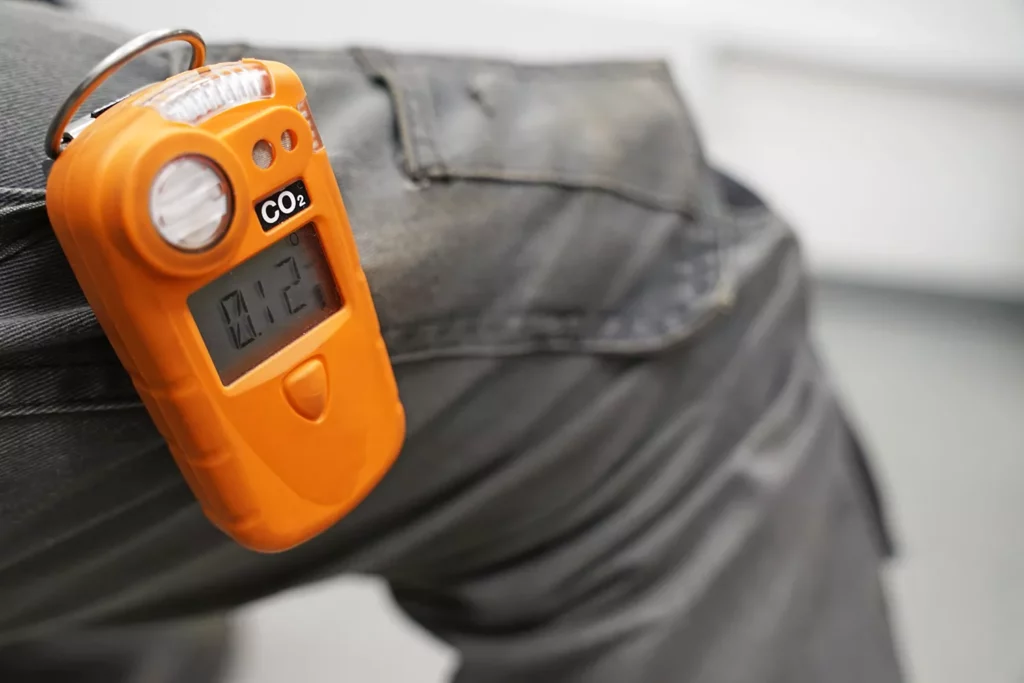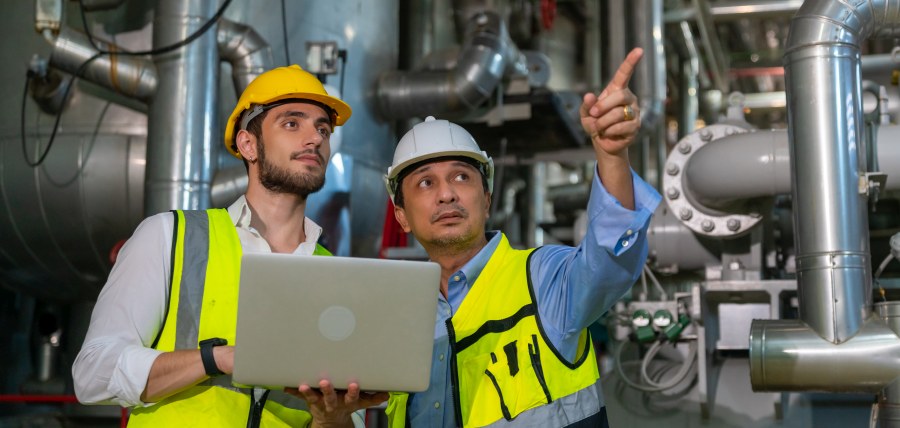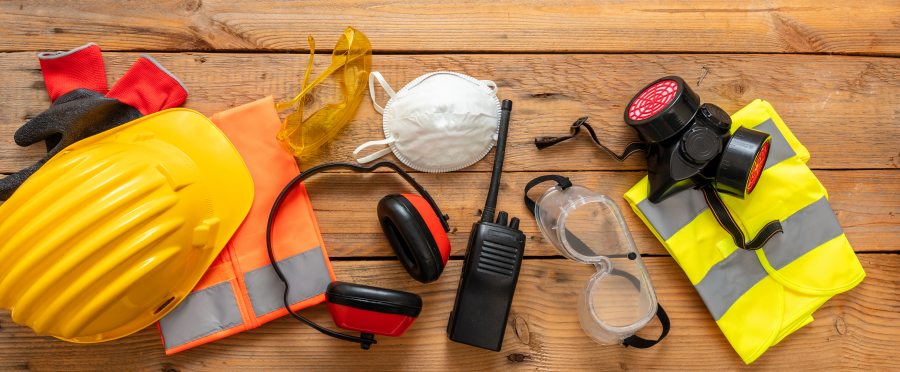
Shocking Ways Smart Wearables are Saving Lives at Work
Imagine a futuristic world where we harness the power of super-smart gadgets to create a workplace where safety is a top priority! Smart wearables blend cutting-edge technology with the mission of protecting our workforce in ways we never thought possible. Picture augmented reality helmets and intelligent vests that not only monitor vital signs but also open a range of possibilities and advantages. Take, for example, Formula 1, where wearables track a driver’s health and collect vital sign data in case of a crash – a true intersection of technology and safety.
In the bustling world of warehouses, major corporations are embracing smart devices that go beyond mere alerts about potential injuries during lifting. They’re also sending out crucial notifications, ensuring workers are aware of potential vehicle contact. Smart wearables aren’t just gadgets; they’re lifesaving tools that prevent disasters. They’re like having a superhero sidekick, working tirelessly to ensure everyone makes it home safe and sound.

PPE and electronic wearable statistics
In companies all over the world, keeping workers safe involves always staying alert, adapting to changes, paying close attention, finding new solutions, and getting better all the time. The more a company understands the risks its employees face and comes up with ways to make those risks smaller, the better it is for everyone. Using data from advanced tools makes safety rules and procedures even better. However many companies are looking for information in real-time to tackle problems quickly and make the workplace safer for their employees. That’s where wearable technology, like cloud-connected wearables, comes in, offering a good solution to these changing safety needs. Here are a few examples of how wearable technology is making a difference in saving lives and reducing injuries:
- hardhat wearables in a high-risk environment, have shown a alarm rates over one year
- Walmart reported a in the first year at locations that rolled out the wearables program
- A workers’ comp insurance company that offers wearable technologies reported a reduction in strain and sprain injuries and overall claims costs by up to 50%
- A large manufacturing company (Toyota) deployed wearable sensors at its Indiana production plant among 120 employees over two months and saw a to complete risk assessments; 84% of team members improved lifting techniques from haptics alone; and a 15% risk reduction by end of the trial.
- Pepsi was able to reduce wearable technology
What is a wearable device?
Smart wearables are wearable technology such as an accessory or clothing, from simple wrist-worn devices to advanced robotics like exoskeletons, wearables mix humans and technology to help keep workers safe by monitoring and communicating potential dangers. These devices, like smart helmets and glasses, have sensors and smart features to prevent accidents, and injuries while improving productivity. For example, smart helmets can show important information and give warnings, and smart vests can check for falls or notify when changes in environmental conditions such as increased hazardous gases. Other devices, such as exoskeletons and biometric tools, reduce physical strain and spot signs of fatigue or health concerns.�� Some devices contain features such as GPS location, voice control, and emergency alerting.
These wearables not only make work safer but also improve communication and decision-making. Smart devices can let workers, supervisors, and emergency teams talk instantly, and GPS trackers show where workers are. Employers can use the data from these wearables to analyze and enhance safety rules, making sure they’re proactive in preventing risks. In short, smart wearables for workplace safety use advanced tech to keep workers safe.
Wearable devices have been around for the . Starting from 1960s! Since then, wearables have evolved from various devices from headsets, watches, phone apps, and hard hats, to now exoskeletons.�� This technology has gained popularity in workplaces due to the potential for safety injury reduction and enhancing overall safety culture:
- U.S. Chamber of Commerce believe wearables would improve on-the-job safety.
- Workplace productivity and satisfaction increased by thanks to wearable tech
- The market has continued to grow at a rate of 30% year over year with the growth expected to reach .
- Between the global smart glass CAGR grew by 125.8%, the highest increment the market had seen
- A smartwatch is one wearable tech with the most users in the world and it is also the most popular in the market with $186.89 million worldwide.
- By 2024, the healthcare sector’s use of wearable tech is expected to reach .
- Smart clothing is expected to grow by about 30% every year from 2019 to 2024.
These statistics give the perspective that wearables are becoming a normal practice in everyday life.���� In 2023, wearable devices were the top safety trend and innovation in the workplace. With such a growth rate of adoption, how can these smart wearables be used within workplaces to improve safety?

How can wearables help safety in workplaces?
Wearables are actively enhancing workplace safety by addressing hazards and reducing the risk of injuries. Devices like smart helmets and glasses utilize advanced technology for real-time monitoring, communication improvement, and incident prevention. These play a pivotal role in proactively responding to potential dangers, and increased vigilance in high-risk tasks like fall protection, musculoskeletal injuries, fatigue management and the detection of hazardous gases.
As part of broader safety programs, wearables contribute to incident data review, offering valuable insights to companies. They facilitate a more responsive approach to workplace safety, ensuring a quick and efficient response to emergencies. Beyond that, wearables also cater to the health and well-being of workers, monitoring their vital signs and helping to create a work environment where safety is a top priority and resulting in improvement of employee morale of feeling of security and trust in the workplace!�� Here is a list of a few examples:
Fall Protection:
- Wearables equipped with can detect sudden movements indicative of a fall, providing alerts for assistance.
Proximity and Physical Safety:
- GPS-enabled wearables enhance lone worker safety by tracking their location, especially in large or hazardous environments.
- Proximity sensors in wearables can help prevent collisions by providing alerts when workers or equipment come too close to each other.
- GPS and location-tracking features assist in tracking workers’ locations, especially in large or hazardous environments.
Ergonomics:
- Posture-monitoring wearables also known as an exoskeleton, provide feedback to help workers maintain proper posture, lifting loads and techniques to reduce the physical load on their body and potentially prevent musculoskeletal issues.
- Smart wearable glasses contribute to improved ergonomics by actively reducing eye strain through features such as monitoring lighting conditions, and eye break reminders to mitigate eye fatigue.
Environmental Hazards:
- Wearables with environmental sensors detect air quality, alerting users to potential hazards like pollution or toxic gases.
- Temperature and humidity alerts from monitoring devices warn workers of extreme working conditions.
Emergency Response:
- Communication-enabled wearables facilitate real-time communication and instant alerts, crucial for emergency response.
- Location-tracking features in wearables assist in identifying workers’ locations during emergencies and evacuations.
Worker Health and Well-being:
- Fatigue detection through biometric data helps prevent exhaustion, prompting workers to take necessary breaks.
- Stress monitoring wearables offer feedback and suggestions to manage stress in high-pressure environments.
- Monitoring other conditions such as dehydration, balance, and motion sickness. This type of monitoring can be critical especially when workers are performing high risk tasks.
- Wearables can monitor noise levels in industrial settings and alert workers when they need to use hearing protection.
- Health monitoring wearables can assist individuals with medical conditions by tracking vital signs and providing alerts.
- Information can be provided to medical responders for critical life-threatening situations.
Tool and Equipment Monitoring:
- Wearables integrated with tools and machinery monitor usage, providing alerts for maintenance or potential malfunctions.
- Providing on-site users with visual guidance, wearables facilitate tasks such as equipment maintenance, troubleshooting, repair, and training Top of Form
What types of wearable devices are available?
A diverse range of smart wearables are available that offer many benefits here are just a few common examples:
- Smart Helmets: provide enhanced head protection, fatigue monitoring, and hazard detection such as toxic gases and vehicles, addressing privacy concerns and potential distraction. Headgear with augmented reality features, cameras, and sensors for project visualization.
- Smart Clothing like Vests offer real-time vital signs monitoring, heat stress prevention, and improved visibility, equipped with sensors for detecting environmental hazards and weather changes as well as potential hazards related to reduced visibility.
- Smart Glasses offer hands-free safety information, augmented reality for tasks, and remote assistance, addressing eye strain concerns and potential distractions.
- Exoskeletons reduce physical strain, detect temperature extremes, and increase safety and efficiency, though initial costs and adaptability limitations may pose challenges.
- Smart Gloves monitor hand movements, detect chemical exposures, and enhance precision, addressing usability concerns and potential tactile feedback issues.
- Smart Watches provide health monitoring, activity tracking, and quick access to notifications, addressing privacy concerns and potential distractions.
- Proximity Devices track distances, detect airborne contaminants and promote workplace safety, though concerns about privacy and misinterpretation of data may arise.

What are some of the barriers to adoption?
Wearable technology is a fascinating innovation. It holds the promise of making companies and workers safer, more productive, and efficient. Yet, while these technologies can transform workplace safety, it’s important to approach the utilization of these devices with caution in the workplace. Here are some examples of the barriers encountered in this journey:
- Costs:
Concerns with the costs of smart wearables in the workplace include initial investment and ongoing expenses for maintenance, training, integration with existing systems, data security, customization, and potential uncertainties around achieving a positive return on investment.
- Privacy and Security:
Addressing concerns related to privacy invasion, data security, or perceived surveillance to ensure a secure and confidential environment for employees using smart wearables.
- Training, and Familiarity:
Providing comprehensive training to ensure employees are familiar with smart wearables, minimizing the risk of improper use due to lack of understanding, and promoting positive behavior in their usage.
- Overreliance on technology for safety:
The use of proximity devices, intended to enhance safety, could present a significant challenge due to the risk of fostering overreliance on technology. This reliance may result in a false sense of security, potentially causing the neglect of other crucial safety measures.
- Distraction, Misuse, and Device Management:
Mitigating the risk of distraction and intentional misuse by promoting responsible usage, avoiding overreliance on the technology, and managing devices effectively to maintain a balance between safety, security, and individual autonomy through positive behavioral practices.
- Customization and Long-Term Engagement:
Recognizing and accommodating individual preferences, addressing concerns related to stigmatization, and fostering long-term engagement by emphasizing the positive impact of smart wearables on safety, security, and overall well-being through positive behavioral reinforcement. Efficient device management strategies play a vital role in achieving these goals.
Discovering the potential of smart wearables for workplace safety introduces hurdles that need overcoming for a safer, smarter, and more connected future at work. The perception of a sophisticated tool enhancing safety for some may clash with the perspective of others who see it as an infringement on privacy. What seems intuitive to a certain group may pose a steep learning curve for others. Technologies readily embraced by some individuals might face resistance from others, and if not handled with care, it could result in team members feeling isolated. Overcoming these obstacles is essential to realizing the full benefits of these innovative solutions.
Summary
Smart wearables in the workplace strike a balance between delivering crucial safety benefits, such as saving lives, mitigating injuries, enhancing safety culture, improving employee morale, and achieving better safety key performance indicator (KPI) reductions, while also posing concerns that need careful consideration. As technology continues to evolve, navigating these challenges becomes pivotal to harness the full potential of smart wearables, ensuring their seamless integration for maximizing safety and efficiency in the ever-changing landscape of the modern workplace.









































